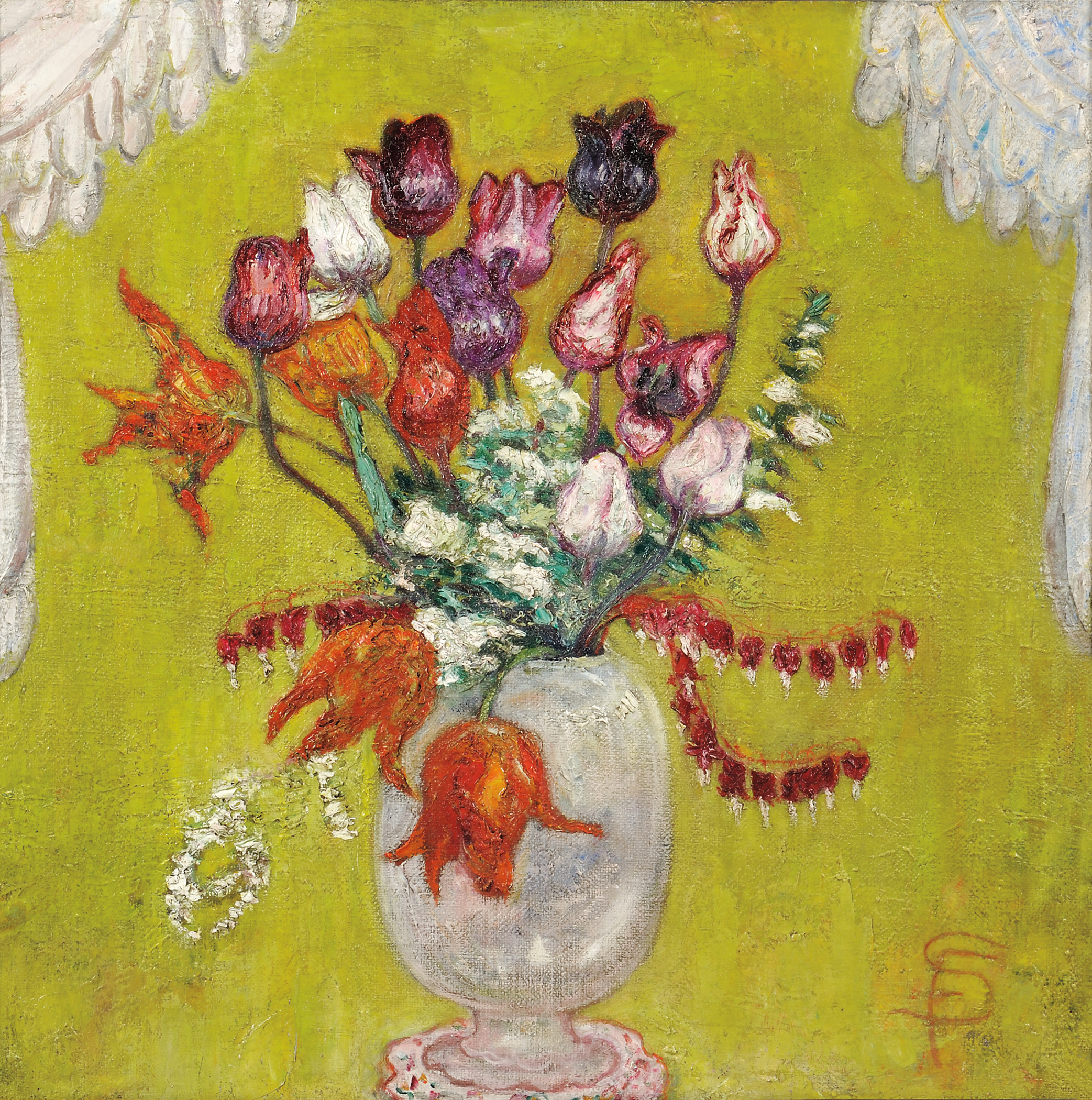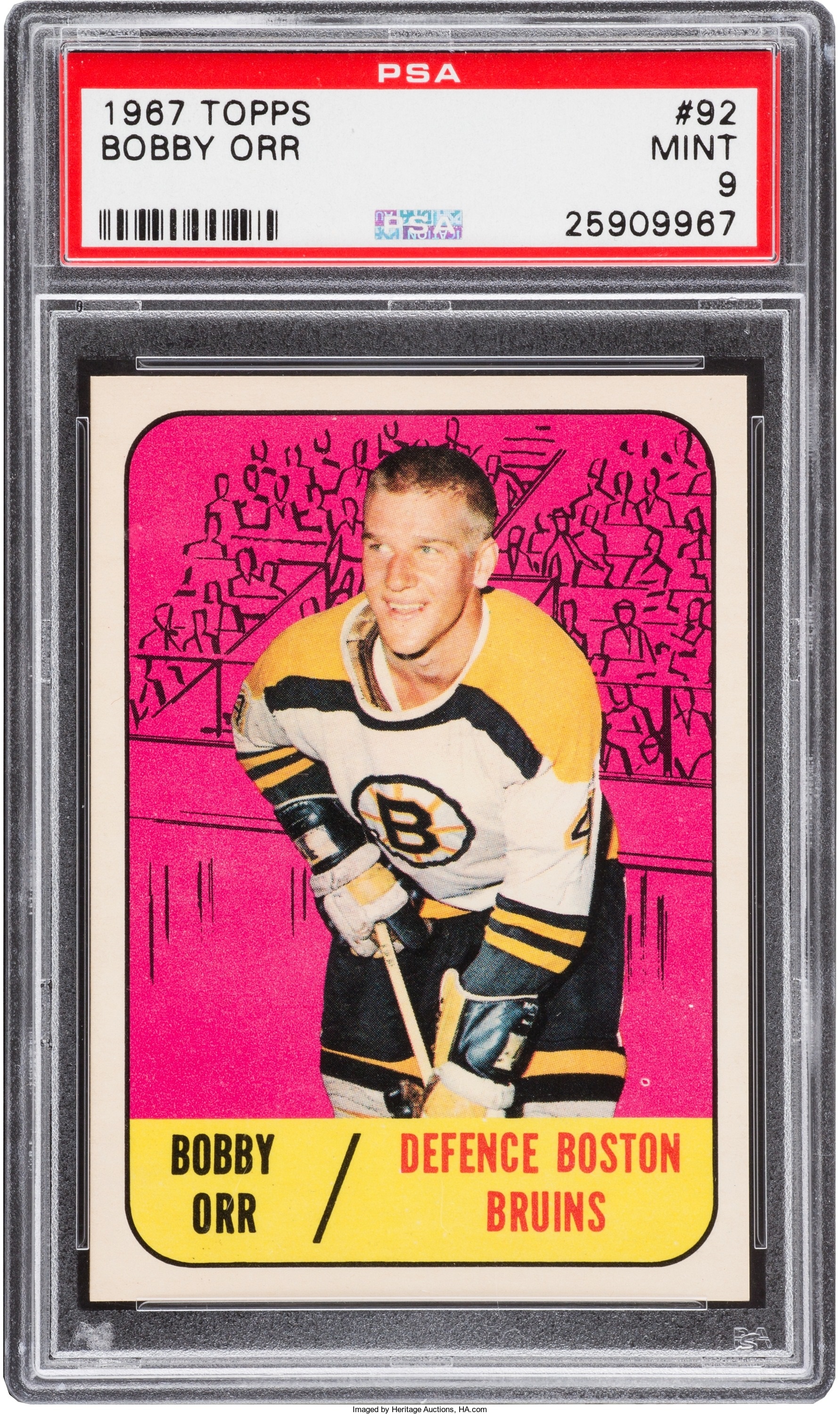RECORD! A Florine Stettheimer Still Life Sells for $375,000

What you see: An undated floral still life by Florine Stettheimer. Skinner sold it in January 2016 for $375,000 against an estimate of $75,000 to $100,000, a record for the artist at auction.
Who was Florine Stettheimer? She was a wealthy American woman who was, and is, regarded as an artist’s artist. Marcel Duchamp and Georgia O’Keeffe attended her salon. She might be the first woman artist in history to paint a nude self-portrait. She wasn’t keen on self-promotion; she had one small solo show at the Knoedler gallery in 1916, which flopped, and she never did another. While Stettheimer’s sisters ignored her wish to have her art destroyed after she died, they gave most of it to museums, leaving little for collectors to acquire. Two years after her death, the Museum of Modern art staged a Stettheimer retrospective. The Jewish Museum in New York is showing Florine Stettheimer: Painting Poetry, until September 24, 2017. She died in 1944 at the age of 72.
How did the Florine Stettheimer still life come to Skinner? “It came out of a house where it had been for decades,” says Robin S. R. Starr, director of American and European Works of Art at Skinner. “It was an estate situation. The family didn’t know much about it.”
How does this Florine Stettheimer still life show off her skills as an artist? “What could be a smarmy, cutesy sort of subject has a wonderful, modernist, fresh vibe all its own,” Starr says. “She has a great, unique personal style. She doesn’t look like anybody else. She’s her own style. The fact that she wanted her work destroyed after she died says she didn’t think much of it, though now we’re rediscovering her and finding out how fantastic it really is.”

How does this Florine Stettheimer still life compare to other Stettheimer paintings? “This is a wonderful work, but in comparison, it is relatively minor,” she says. “This is a record-breaker because none of those works [of hers] in museums have come up at auction.”
How did you decide on the estimate of $75,000 to $100,000? “It takes a lot of chutzpah to put an estimate on something that you know is going to sell for a world record,” she says, noting that the previous record for a Stettheimer was set in 1997 by a painting that commanded $145,000 against an identical estimate. “Artnet has six records [for Stettheimer], and only one [of the six artworks] has real figures in it,” she says, adding, “It was really more of a gut instinct. You’ve got to decide what’s a fair estimate based on what little track record there is and how wonderful you think the picture is. Ultimately, an estimate is a guess. It’s a well-educated guess, but a guess.”
Were you surprised that the Florine Stettheimer still life did so well? “Yes and no, which isn’t a fair answer,” Starr says, laughing. “Yes, I was thrilled. I didn’t think it would do that well. I thought there was a very good chance it would go over its estimate. I didn’t think it would go two or three times over.”
How much of a role did Stettheimer’s personal story play in driving the record auction price? Did it help? “That was absolutely a part of it,” she says. “The story is important–just watch Antiques Roadshow. But ultimately, it has to come down to an object that’s beautiful enough or inventive enough to sell the story. If she was a mediocre painter, it’s not going to matter. The story isn’t enough.”

What else makes this Florine Stettheimer still life special? “That palette is just–apparently, I’m going to keep using food terms–it’s so delicious. Instead of saccharine, we get that acidity, and that combination is just a gut punch. It’s one of those objects you see and you’re just stopped in your tracks. There’s nothing like it. It’s just its own thing.”
How to subscribe to The Hot Bid: Click the trio of dots at the upper right of this page. You can also follow The Hot Bid on Instagram and follow the author on Twitter.
You can follow Skinner on Twitter and Instagram, and you can follow Robin S. R. Starr on Twitter and Instagram as well.
Image is courtesy of Skinner.
Would you like to hire Sheila Gibson Stoodley for writing or editing work? Click the word “Menu” at the upper right for contact details.






